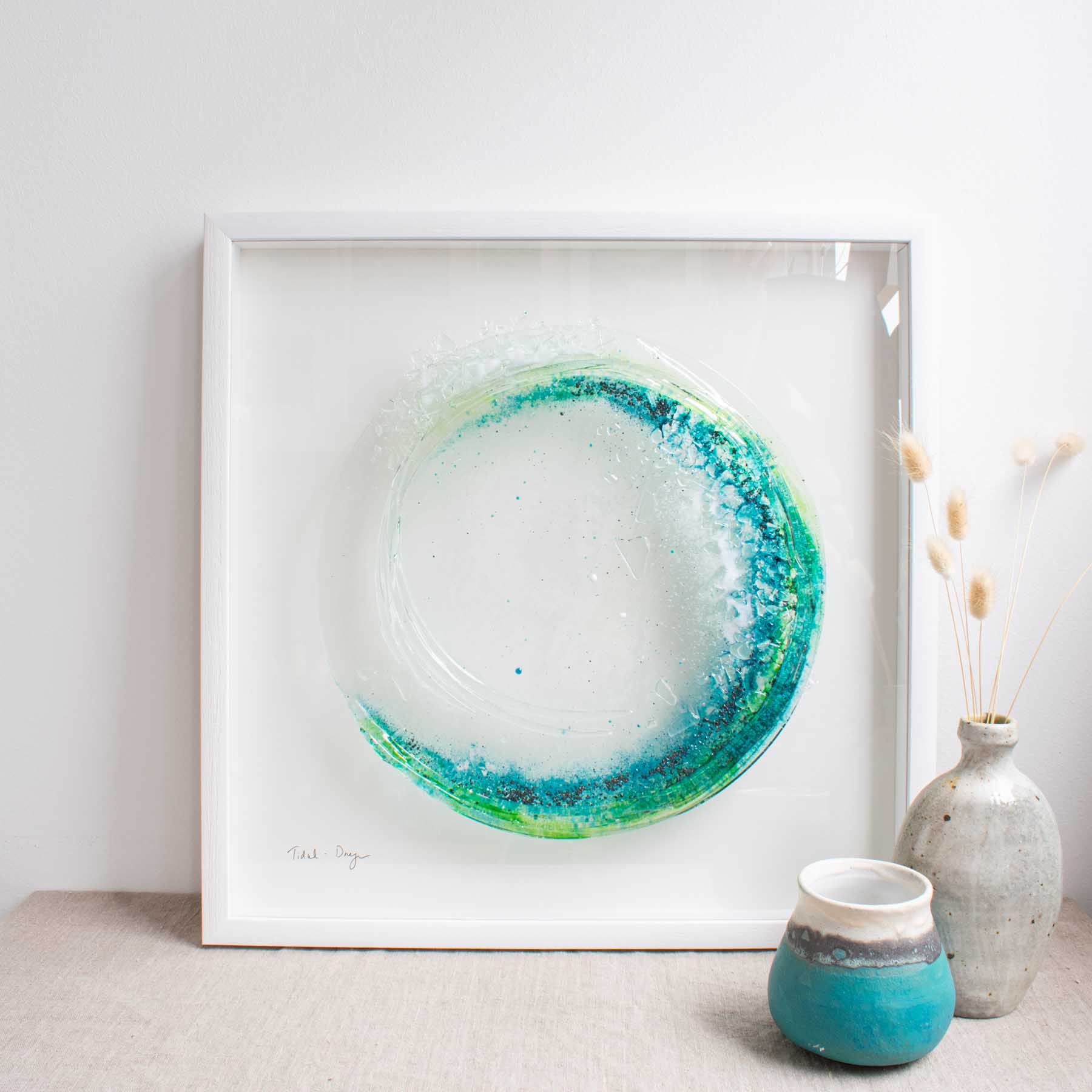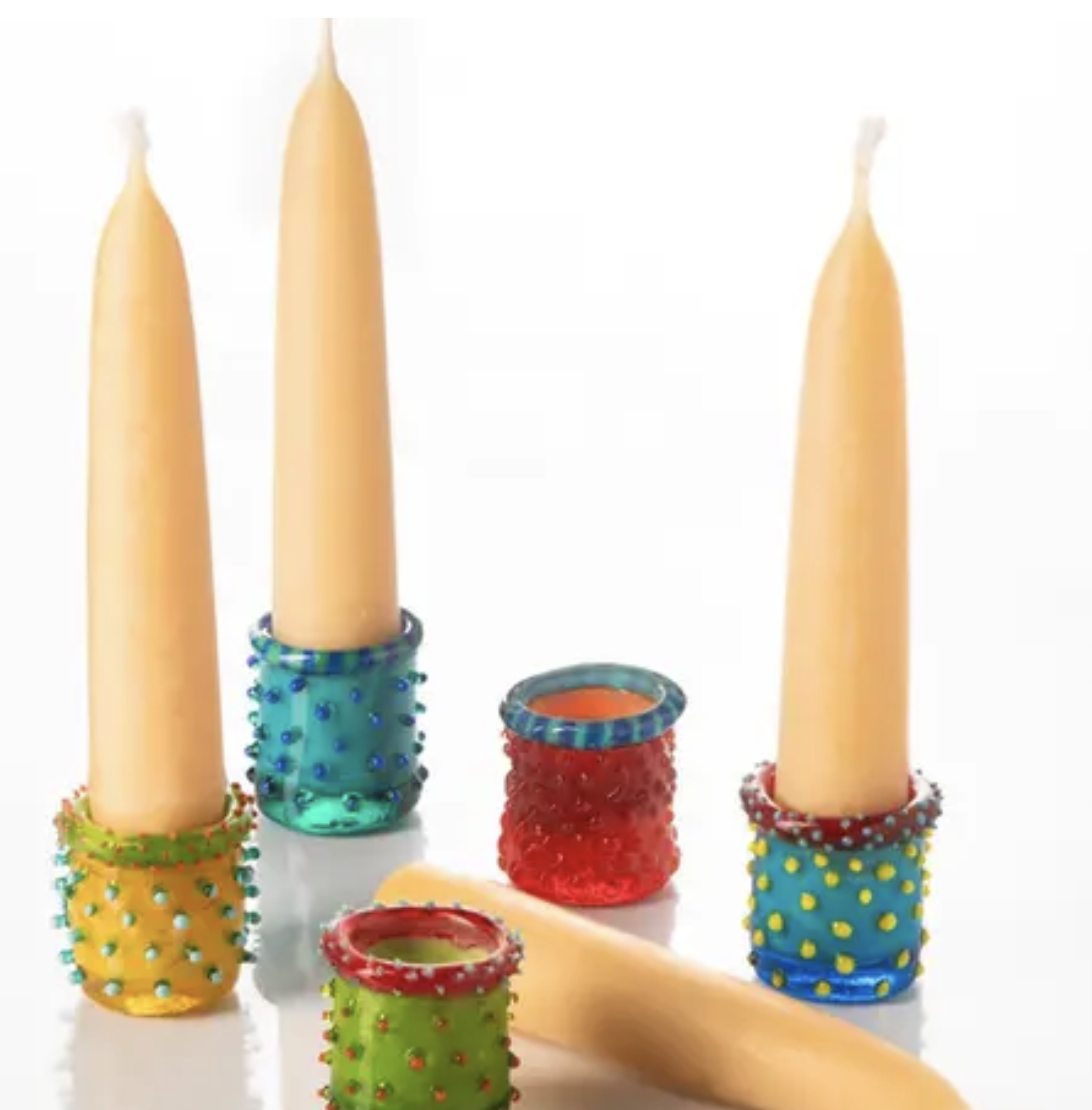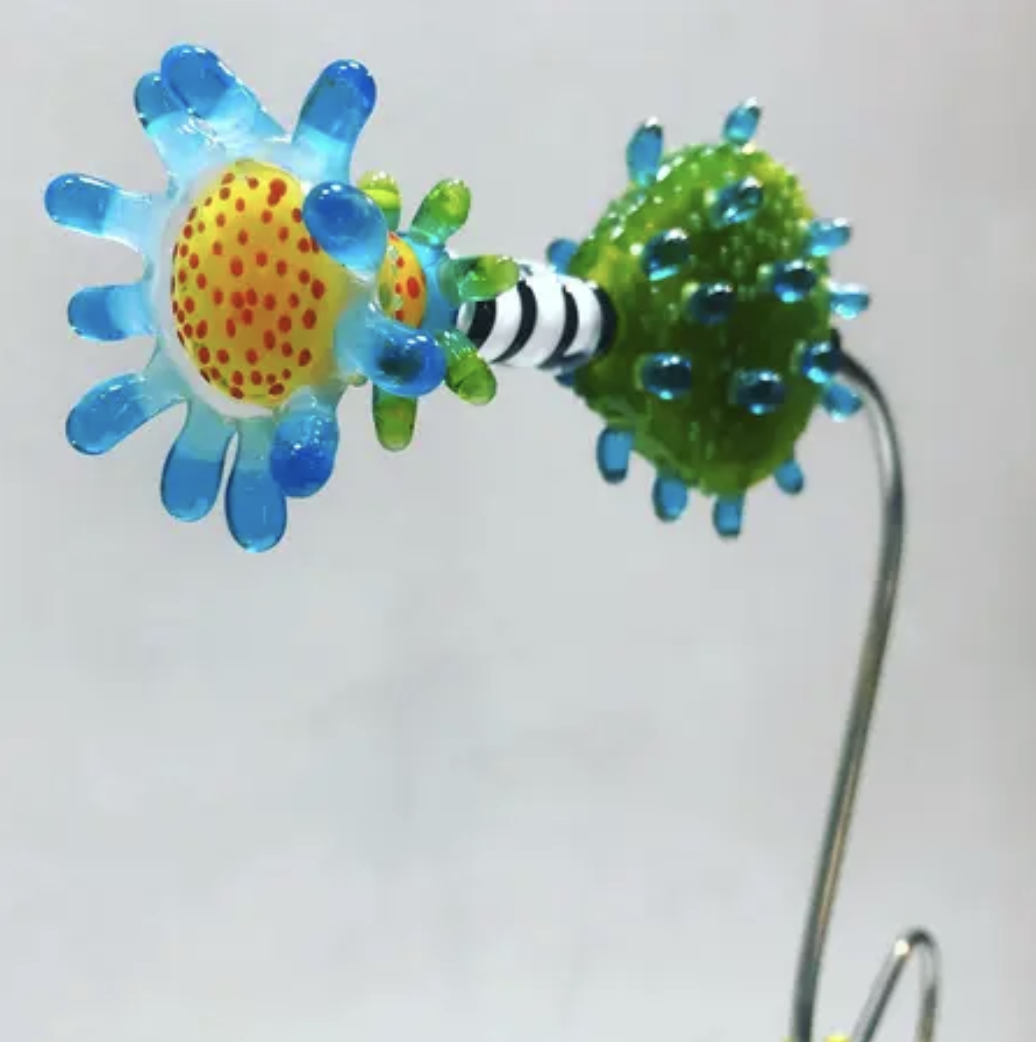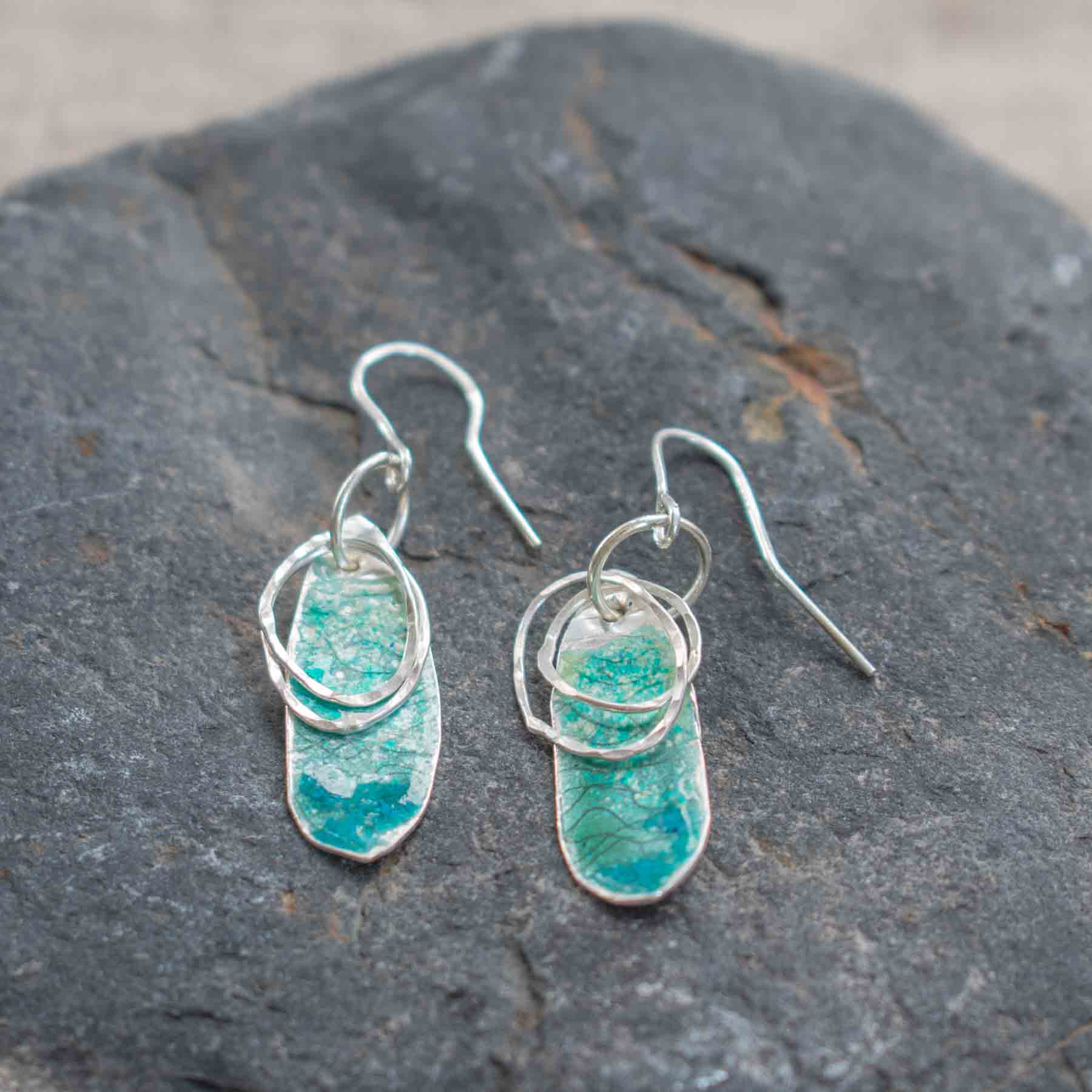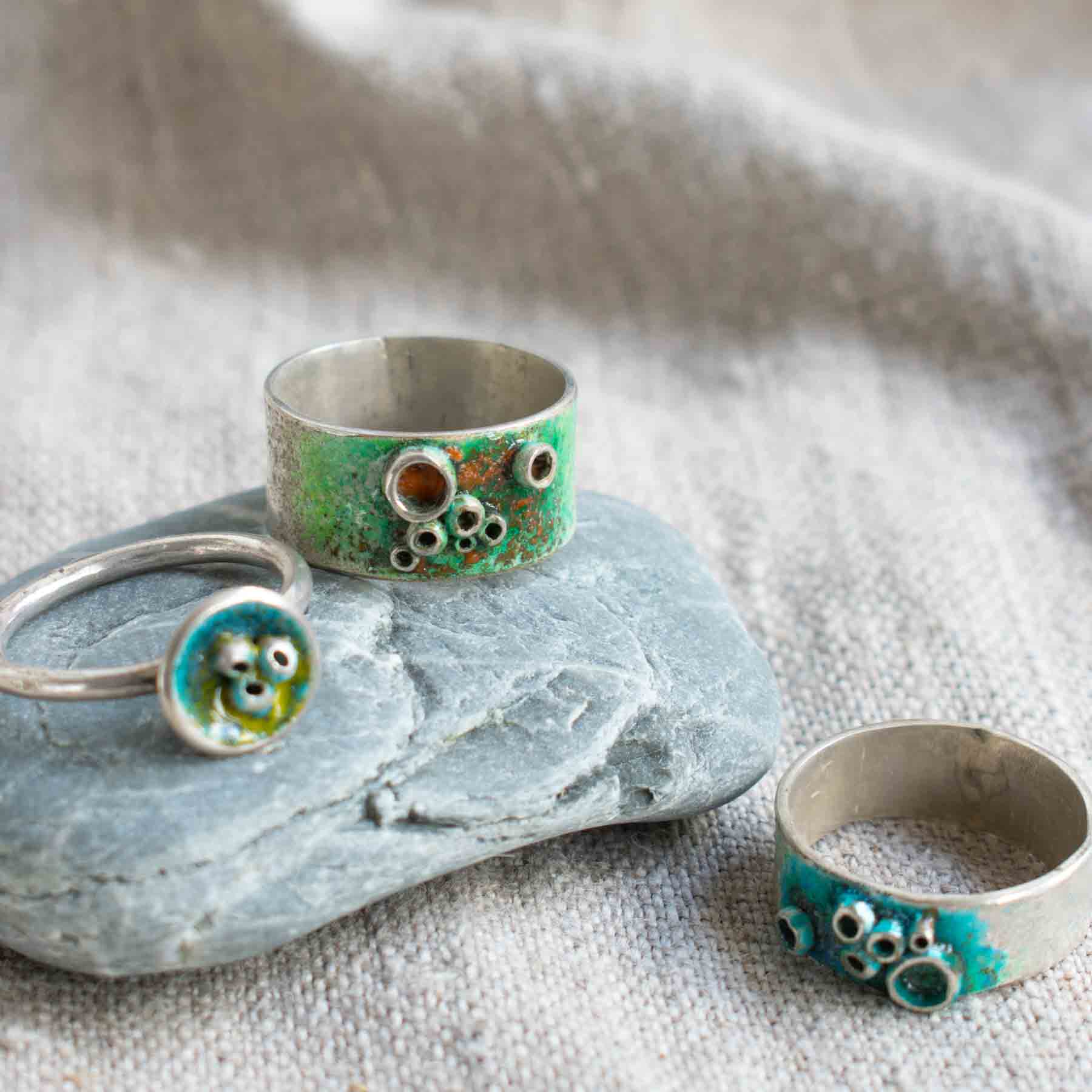Discover the Beauty of Contemporary Fused Glass Art and Tableware

Fused glass tableware by Article Glass
Contemporary fused glass is an art movement that deserves huge recognition. It’s a very technical discipline as well as creative and requires much scientific know-how due to its changing molecules and scorching temperatures.
‘Fusing Glass’ might only be for the brave, right? Well, hopefully, we’ll show you that with the proper understanding of the techniques, you, too, could turn your hand to it and fall in love with the world of contemporary fused glass.
If you’re happier to admire glass artwork from afar, then look no further; we will introduce you to Cornish fused glass artists who create stunning glass artwork and tableware.
Fused and coastal-inspired glass art can be a saturated market and, at times, slightly generic. We’re here to introduce you to glass artists who create beautiful and unique glass artwork to a high standard and push the boundaries of their creative practice.
What are the different types of fused glass art?
Let’s keep it simple to start; when you heat glass it begins to soften, and it is this softening which gives glass a malleability that artists can work with. It can be melted, shaped, and moulded, into a new form, which once cooled and hardened is the silky smooth solid glass that we’re used to. Fused glass is not glued, but is bonded permanently at a molecular level.
There are two main types of fused glass:
Tack Fuse
This is sometimes known as ‘contour fusing’ which is a great way to visualise the technique. Pieces of glass are stacked on top of each other and heated to a lower temperature (730°C-750°C). This ensures they partially melt enough to soften and fuse together at contact points, but they maintain some structure and the layers are intact. This technique is great for glass sculptures which are more detailed and complex.
Full Fuse
Crank up the temperature to between 780°C and 800°C, and you’ll enable a ‘full fuse’. This means the glass softens more than it does during the tack fuse, and the components melt into one smooth layer. This is great for more functional glass items, such as tableware. The seamless connection of different colour glasses is incredibly satisfying!
What is the difference between fused glass and blown glass?
Fused glass is made by the techniques above, and a specific glass is used for fusing. ‘Fusible Glass’ is made to withstand heating, cooling, and the resulting expansion and contraction. The COE (coefficient of expansion) of compatible glass means minimal breakages as it contracts and expands to the same ratio. Feeling like you’re in a science lesson yet?
When making fused glass artwork, the components (often different colours) are cut into the desired shapes before being placed in a kiln. Fusible glass can be cut by carefully scoring it, and then using special pliers to place pressure on the breaking point, allowing a clean snap.
The kiln is then heated to different temperatures depending on whether you’re doing a tack fuse or a full fuse, and goes through multiple heating and cooling cycles.
It can take a short time to design a stylistically minimal glasswork, and a much longer time in the kiln, up to 20 hours, depending on the thickness. Sometimes pieces require multiple firings to achieve the desired effect.
Once the individual glass components have bonded together, the artist can work with the fused glass to experiment with the overall three-dimensional shape. This malleable glass can be dropped into a mould, in a process called ‘slumping’, or it can be bent over a mould, which is called ‘draping’. This results in the gorgeous, smoothly curved dishes and sculptures made by talented Cornish fused glass artists.
How is fused glass different from blown glass? They are hugely different in many ways, from the heat source, to technique, to final form. Traditional glass blowing is a highly skilled process, and has to be seen to be believed.
Instead of a kiln, an open furnace is used (a bit like a pizza oven). Rather than shutting the doors on it like a kiln, the glass blower creates their shape by returning to the heat often to soften the glass. There’s an incredible momentum, with gravity pulling the molten glass downwards, which means the glass blower is constantly rotating the long steel rods with 700°C blobs of glass on the end.
Fused glass is a much more accessible practice than glass blowing, as the learning curve is relatively short, and there are fewer physical demands. Although it still takes design skill, patience, and an understanding of technique, I encourage everyone to give it a go – but it’s always wise to join a class first just so you know the do’s and do not’s!
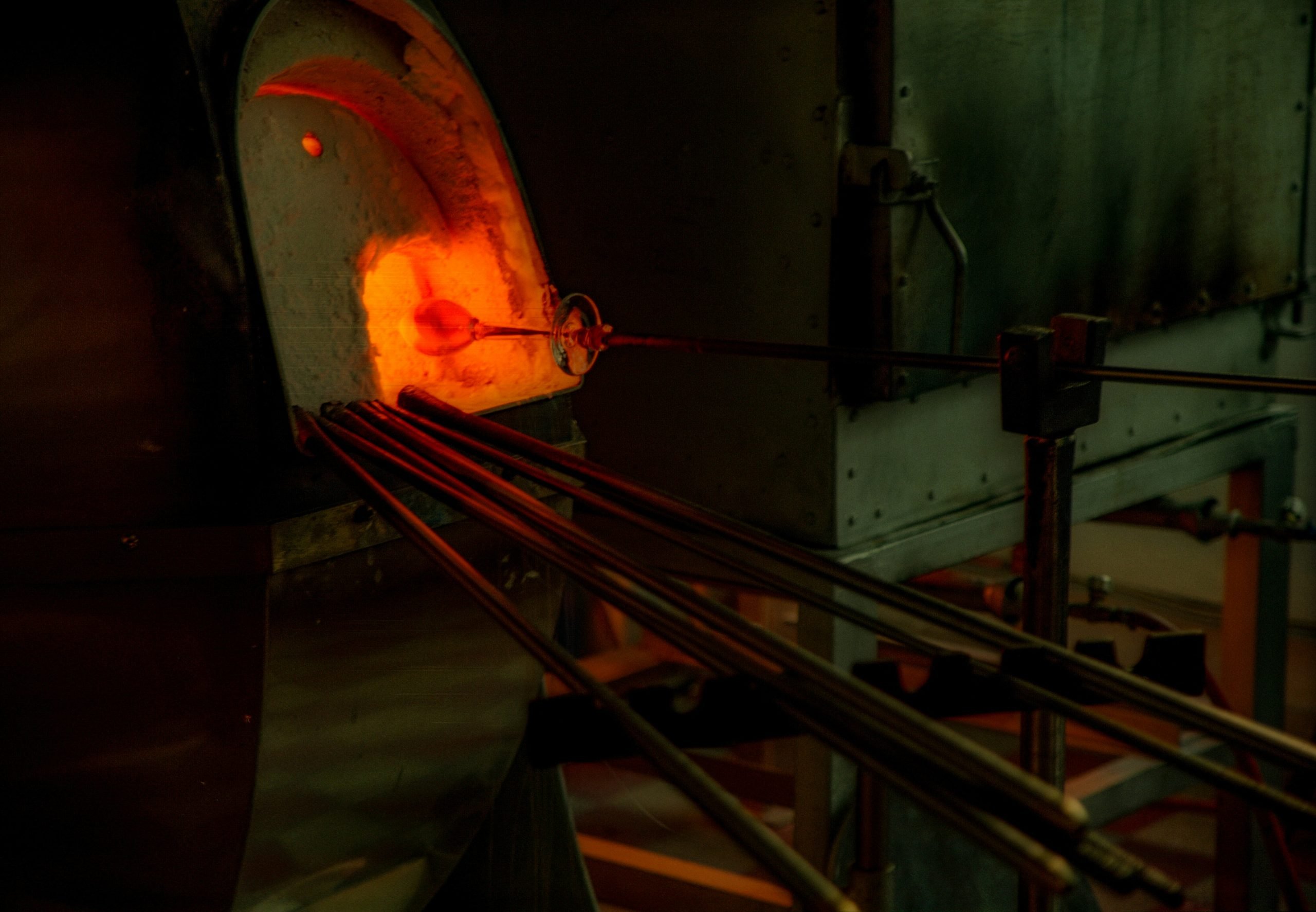
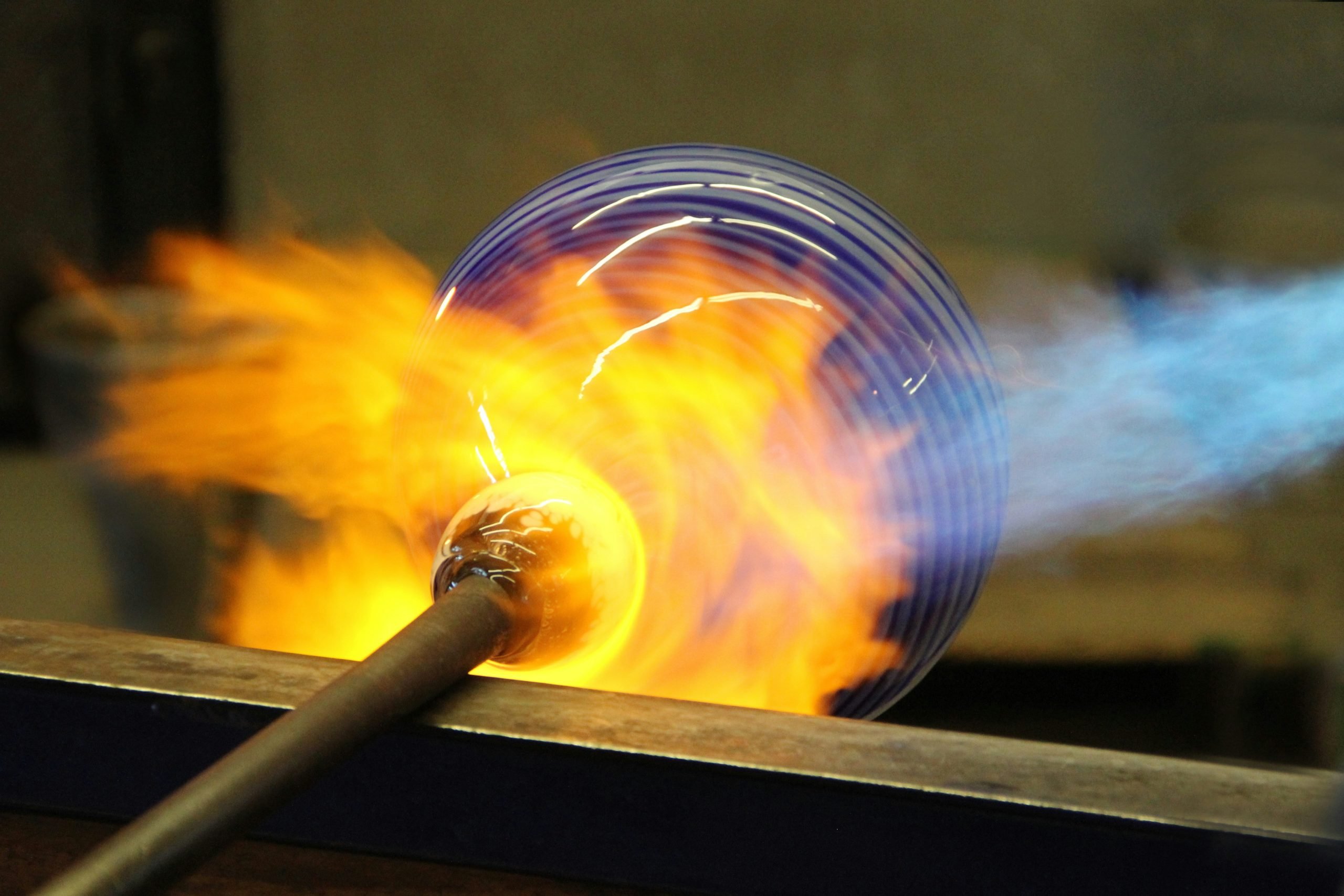
Our Top 3 Cornish Contemporary Fused Glass Art Pieces
We have a personal love and affinity for fused glass here at Inspire Makers – read on to find out why! But for now, here are our top three contemporary fused glass art pieces, made in Cornwall.
An interview with contemporary fused glass artist: Article Studio
Who better than to give us an insight into fused glass art in Cornwall, than our very own Vicki Glaister! Vicki founded and runs Inspire Makers, a shop on Falmouth’s beautiful Old High Street that champions Cornish artists and artisans.
When the closed sign is up, chances are she’s retreated to her studio at the rear of the building, and is working on her silver clay jewellery or her fused art glass. A woman of many talents!
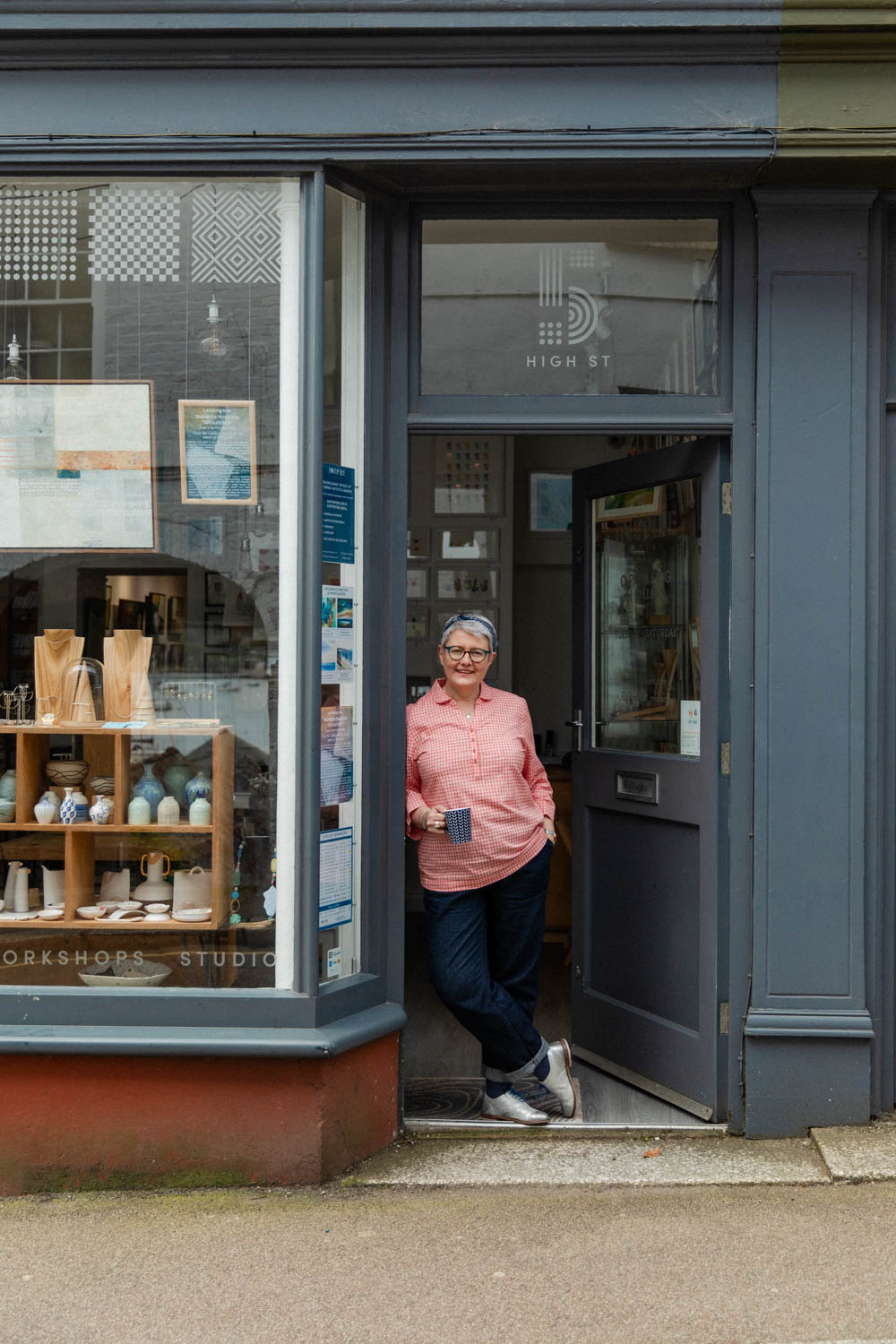
Hi Vicki, thanks for giving us an insight into life as a fused glass artist! Here are some quick-fire questions we have:
How did you get into making fused glass?
I originally tried to learn lampworking to create glass beads for use in my jewellery, but I couldn’t get the hang of it. Then, after attending a glass fusing workshop, I decided I liked the fusing process more so bought a small kiln and went from there.
Where does your design inspiration come from?
I am very geometric in style so like to work with a lot of straight edges and rhythmic patterns. Not the easiest choice as cutting straight glass edges can be tricky! There is definitely an art to the straight line, and then in the kiln different colours glasses can fuse at slightly different rates so sometimes those lines move – but I won’t bore you with the science!
What’s the most interesting bespoke commission from fused glass that you’ve made?
I usually make coasters and dishes to match home interior colour schemes, and the nautical alphabet pictures have had some interesting words!
What’s your advice for people who are new to fused glass art?
Practice. Glass cutting is easy when you know how but hard to get right at first. And keep a stash of plasters to hand as no matter how careful you are, most likely you will cut yourself! Also, learning your kiln is like learning your oven when you bake. You can follow a “recipe” but your “oven” might differ slightly from someone else’s. So when you start off you need to test and keep detailed notes to see how it works best for you and your equipment.
What’s your favourite item to make with fused glass?
There is much more to learn as there are many different techniques in glass fusing, and so I have been attending masterclasses and one-to-one problem-solving sessions (remember I mentioned science and testing!) So a favourite thing is hard as I am always excited about the latest method I’ve picked up!
And lastly, where can we buy your fused glass pieces?
Obviously, they are sold at Inspire Makers, and I attend the occasional makers fair when I’m not committed to running the shop (which is rare!) So, at the moment, outlets are limited, but you can always order online, contact me to discuss a commission or pop into the shop.
Bespoke Fused Glass Commissions
If you’re drawn to symbols and shapes and perhaps have an affinity for sailing or the seaside, why not design your own bespoke fused glass commission? Vicki creates made-to-order personalised word pictures, spelling out names using the visually striking nautical alphabet.
They are a great way to show your love and appreciation for a person or place. Whether you choose a nickname, anniversary, favourite beach spot, or birthday, all of these are particularly lovely when spelt with nautical alphabet letters made from fused glass.
Made from 2.5cm pieces of fused glass, and framed in a hand finished box frame, these bespoke fused glass pieces are small and sentimental. They are also a fantastic conversation starter! Everyone will be very impressed with your knowledge of the nautical alphabet…
Other Types of Glass Art
Now you’ve been introduced to Cornish fused glass artwork, perhaps you’re feeling inspired to branch out and experiment or learn about other types of glass art.
Stained-Glass
If you’re new to glass art, then when you hear ‘stained-glass’ you might start thinking of those beautiful stained-glass windows in churches and cathedrals, the rainbow colours that the light dances through, and that have been awe-inspiring since childhood.
To make a stained glass window (or artwork) coloured glass is cut into shapes which make up a picture, and a metal framework holds the pieces together.
Stained-glass doesn’t just belong in churches though, there are a number of contemporary artists approaching stained-glass art with fresh eyes.
From jewellery to wall art to colourful stained glass windows, the glass used is often made with beautiful textures that would disappear in heated glass work, and the transparency has always held its charm
Cornish artists are using the medium to depict abstracted Cornish seascapes and landscapes, with the deep blues of our waters being particularly evocative in the stained glass.
Although stained-glass artist Julia Mills has now retired, if you’re looking for a little inspiration, head to Julia’s Instagram to see the beauties she created. We were lucky enough to stock her work at Inspire Makers!

Heather Frary is one of Cornwall’s most popular stained-glass artists, and we are big fans of her contemporary style and how she plays with light and textures within her work.
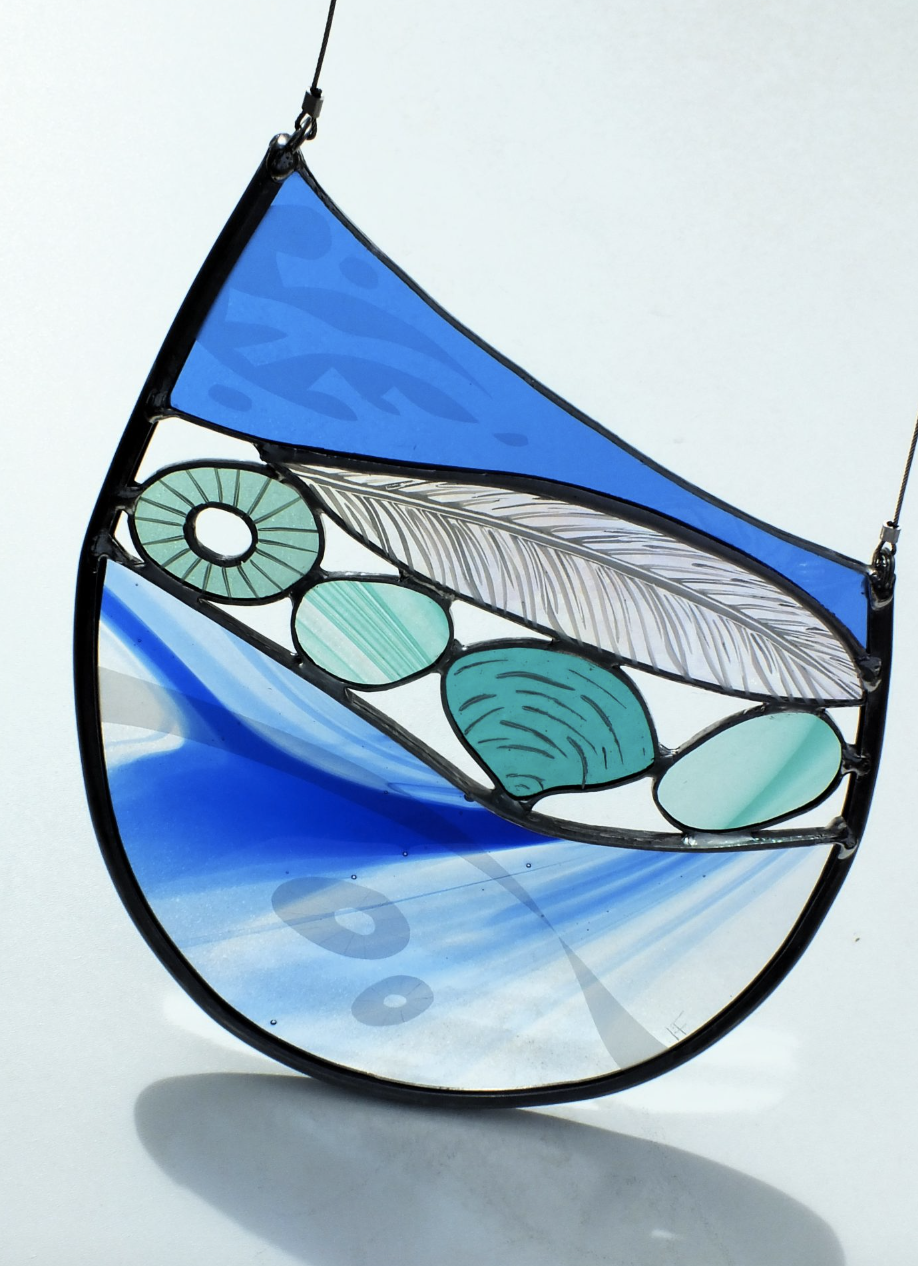
Casting
Casting is a less common form of glass art, and is the process of shaping glass objects. As the name ‘casting’ suggests, moulds are used here to help the glass take on the intended shape. Glass is melted, and poured into a mould which could be made from sand, granite, silica, wax, or plaster.
The trick here is to make sure the glass cools down as slowly as possible, which will lessen the likelihood of cracking. Which is not what you want after all that hard work!
Amy Whittigham is a Plymouth based cast glass artist making jewellery and sculptures with a strong coastal connection.
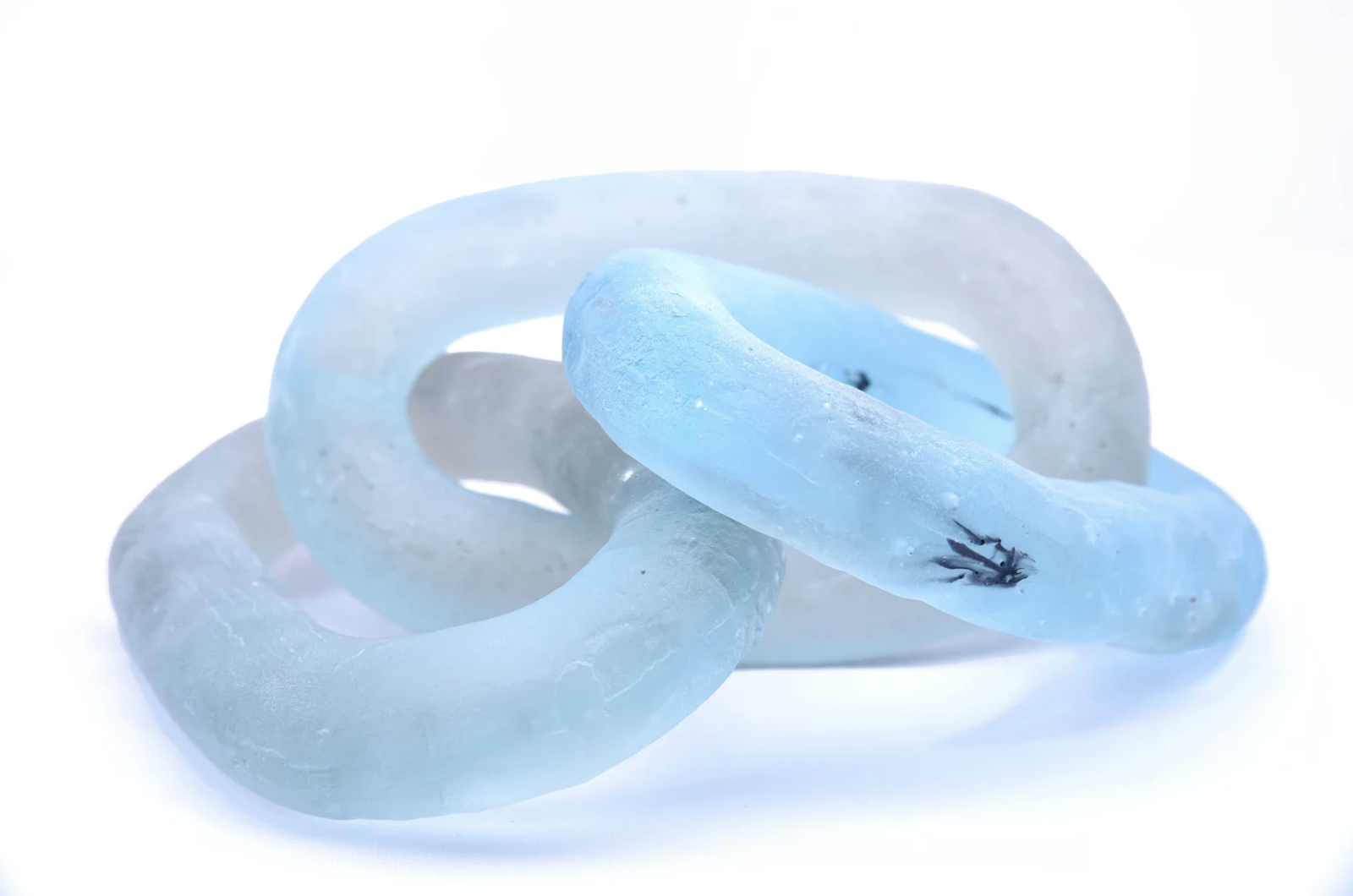
Lampworking
So what is lampworking? The name derives from the technique’s origins hundreds of years ago, when glass used to be heated over a small oil lamp. The term describes making beads and other shapes from melting and forming glass over a flame.
It is done on a far smaller scale than glass blowing and is a common technique for creating glass beads and ornate designs.
We go from rod to bead, but how? The artist uses a mandrel, a metal rod over which the bead will be formed, using a special torch that burns a mixture of propane and oxygen for a clean flame. A separate glass rod is heated too, until it becomes soft enough to work with, and can be wound around the mandrel. Different shapes, colours and details can be added, before the glass mass is finished with a clear layer of glass to encompass and smoothen the design.
Once the hard work is done, the glass must be annealed, which is a cooling process in a high-temperature kiln. This reduces any shock, and prevents fractures within the glass. The bead is then removed from the mandrel and cleaned.
We are in awe of Devon-based Penny Carter, who uses traditional bead-making techniques with a twist, making a range of jewellery, sculptures, and homewares. All of which are a joyful delight!
Enamel Jewellery
Now for a type of glass which might have passed you by, as it’s far more subtle than the other glass art techniques we’ve mentioned. Enamel jewellery by Cornish makers is a favourite in the shop, and such a range of beautiful colours can be achieved.
Enamel is a glass powder, it is applied to metals and heated to high temperatures, which allows it to form a durable coating over the metal.
There we have it: an introduction to fused glass art and, while we were on the subject of glass, a whistle-stop tour of artists creating beautiful contemporary glass artwork!
Making glass art is high risk but high reward, and the stunning colourful creations continue to enchant us. Although it’s a technical practice that requires educating yourself on the science and safety needed, it’s one that is creative and transformative, and we encourage you to find your nearest glass art workshop!
Failing that, join us in supporting those who make art glass so wonderfully by buying glass art from Cornish artists.
Want To Hear More? We Would Love To Hear From You.
Sign up to the Inspire Makers newsletter for monthly updates on makers, workshops and exhibitions.



